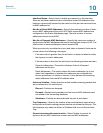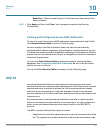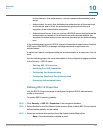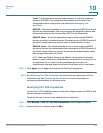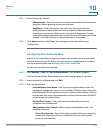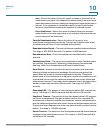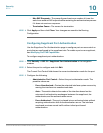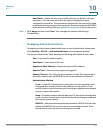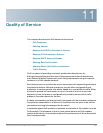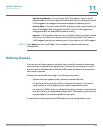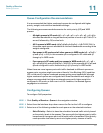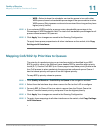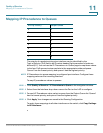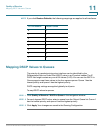
11
Cisco Small Business SG200 Series 8-port Smart Switch 164
Quality of Service
This chapter describes the QoS features of the device.
• QoS Properties
• Defining Queues
• Mapping CoS/802.1p Priorities to Queues
• Mapping IP Precedence to Queues
• Mapping DSCP Values to Queues
• Defining Rate Limit Profiles
• Applying Rate Limit Profiles to Interfaces
• Traffic Shaping
QoS is a means of providing consistent, predictable data delivery by
distinguishing packets that have strict timing requirements from those that are
more tolerant of delay. Packets with strict timing requirements are given special
treatment in a QoS-capable network.
Each physical port on a switch has one or more queues for transmitting packets to
the attached network. Multiple queues per port are often configured to give
preference to certain packets over others based on a user-defined criteria. When
a packet is queued for transmission in a port, the rate at which it is serviced
depends on how the queue is configured and, possibly, the amount of traffic
present in the other queues for the port.
If a delay is necessary, packets get held in the queue until the scheduler authorizes
the queue for transmission. If a queue is full, packets have no place to be held for
transmission and might be dropped by the switch.
In networks where QoS operation is enabled, all elements of the network must be
QoS-capable. The presence of one or more nodes that are not QoS-capable
creates a deficiency in the network path and the performance of the entire packet
flow is compromised.



